The Beauty of Bonsai — Living Art, Rooted in Harmony
http://decor-ideas.org 08/17/2013 18:25 Decor Ideas
A bonsai tree is not a specific type of tree, nor is it a dwarf. Bonsai is the name of a Japanese discipline that involves the creation of a miniature tree shaped and grown according to ancient rules. Age-old methods of pruning the roots to keep the tree small and wiring the branches to achieve directional growth create a tiny tree that closely resembles a mature one in nature.
Hundreds of types of trees can be grown and trained to be bonsai. For many, the refined tradition of bonsai goes far beyond the creation of a beautiful house plant or decorative object — a bonsai tree represents the harmony among man, his soul and nature.
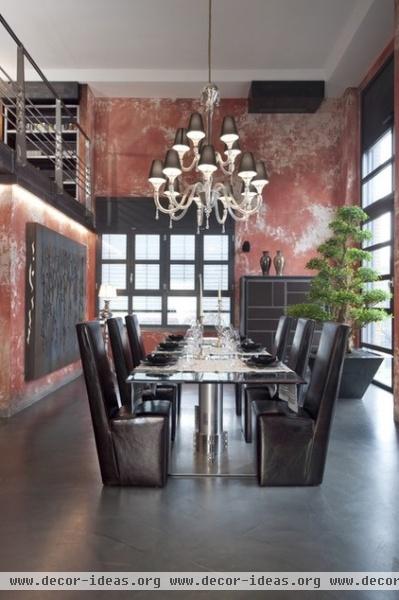
A large bonsai in a dining room, which appears to be a formal upright bald cypress, gives the impression of dining in the forest.
The art of bonsai began in China more than 1,000 years ago; the word bonsai means “tree in a tray.” The Japanese adopted the practice through Zen Buddhism, through which the art was modified and refined. At first, bonsai trees were found only in Buddhist monasteries, but bonsai became an art enjoyed by nobility before finding its way to the general public.
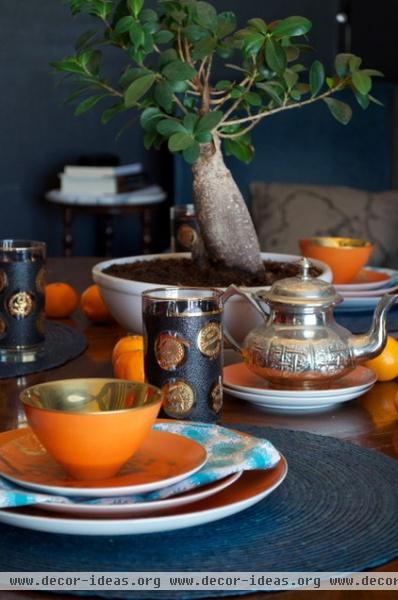
A bonsai makes an exotic centerpiece, and is especially dramatic in a dark setting punctuated with bright colors.
The ginseng ficus bonsai seen here is largely regarded as the easiest bonsai to grow, so it's a great place to start.
While the ginseng ficus thrives outdoors in tropical or subtropical climates, it actually requires little sunlight, and therefore does well indoors year round provided it is watered moderately and kept away from direct sunlight, which can burn its delicate leaves and inhibit growth.
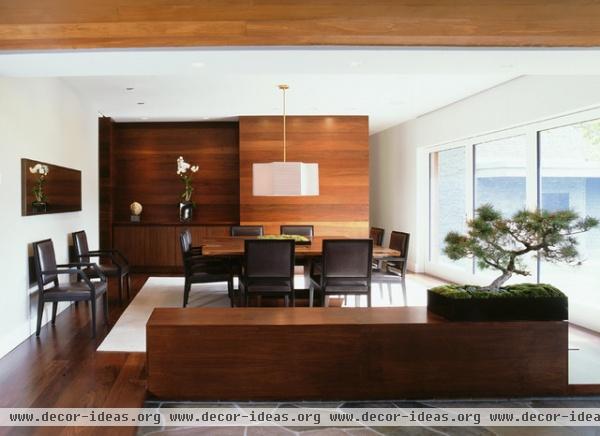
A large bonsai placed exactly at the end of a low cabinet blends beautifully with this well designed modern space. The bonsai's windswept appearance appears to be beckoning us to enjoy the view beyond, creating a connection with the outdoors.
While this bonsai does look stunning here, bonsai made from conifers such as pine and cypress are not recommended as house plants and will very likely not live for long. If you are planning on growing your bonsai inside, you may want to consider a tropical variety such as a cherry, hibiscus, camellia, ginseng ficus, Chinese maple or schefflera. These species can withstand higher temperatures and do not require a dormant period.
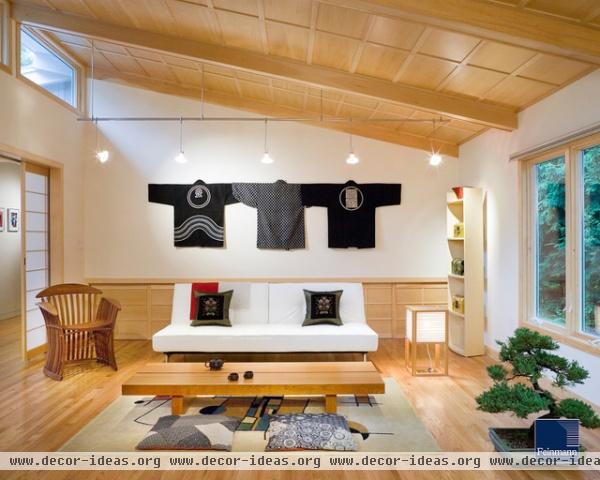
A bonsai is right at home in this Japanese-style interior, and in fact a room like this one could feel incomplete without a bonsai.
Nonetheless, bonsai are traditionally brought into the home for only a few days at a time for enjoyment, and are raised primarily outdoors where the conditions suit the intrinsic needs of the plant. Wondering what kind of bonsai will be appropriate for the climate in which you live? Choose a species that grows to full size in your area.
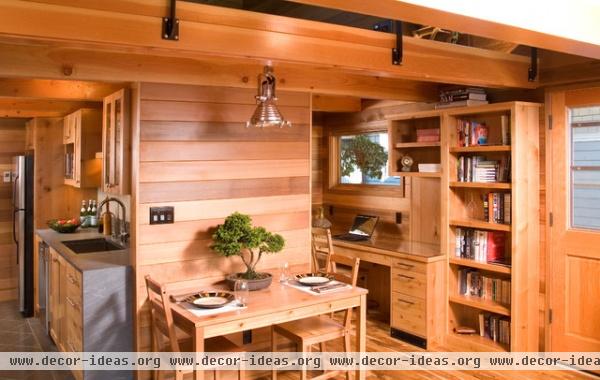
A houseboat, with its compact dimensions, is a fantastic place to enjoy a bonsai. Its placement on the breakfast table gives this wood-paneled wall all the interest it needs, while defining a spot that might otherwise be lost in a sea of wood.
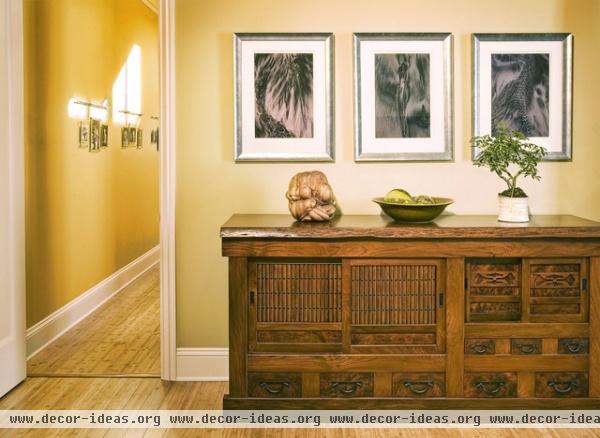
A small bonsai can be used as just one element in a trio of decorative objects, and is especially suited for pairing with Asian-style cabinetry. The bonsai shown here is a schefflera, one of the tropical species that is compatible in an indoor habitat.
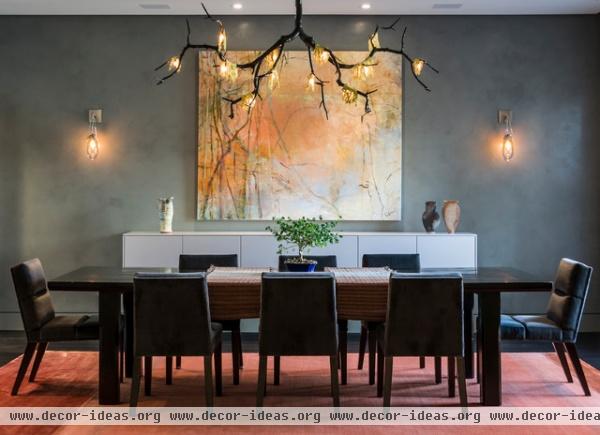
A single bonsai looks stylish on a dining room table and creates an interesting dialogue with the branch-shaped chandelier overhead.
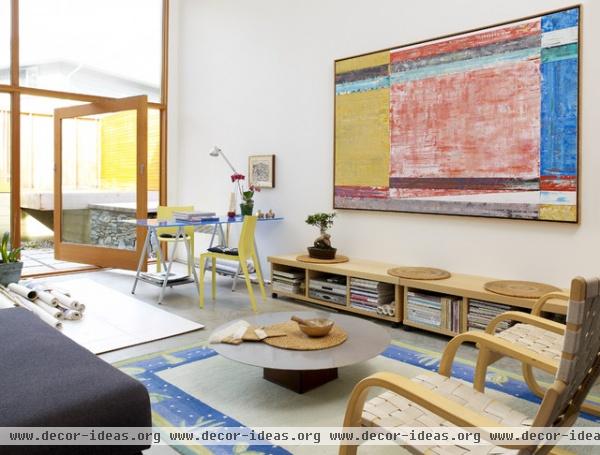
The extreme contrast in scale between the relatively tiny ginseng ficus bonsai and the abstract painting creates an interesting dynamic. Despite its small size, the bonsai serves as an important visual punctuation point that causes the eye to pause and appreciate the painting.
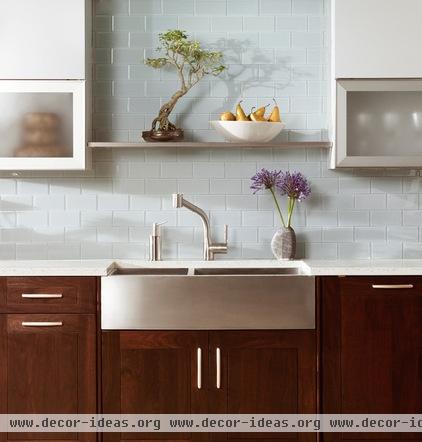
A beautifully simple bonsai is a stunning addition to this traditional kitchen with a modern edge. Its placement over the sink suggests a pastoral window view.
The Chinese elm is one of the most popular tree species sold as a bonsai on account of its tolerance of a variety of substandard conditions. It is a fast grower that is easily trained into a number of shapes, and it can be raised indoors or out. It is a deciduous tree, so don't worry if it loses all its leaves in the winter if it is placed outside.
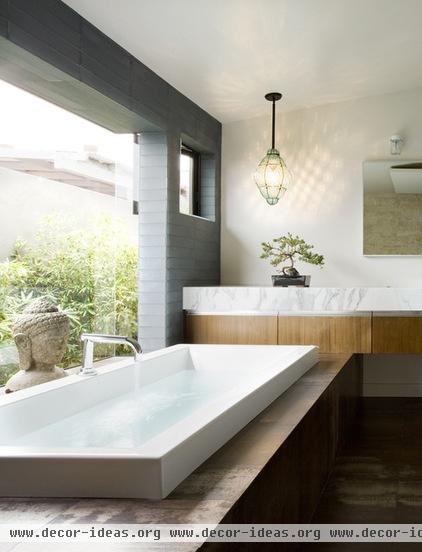
A bright humid bathroom is a good location for bonsai that generally don't fare well in a dry home. A position at the end of a long tub accentuates one of the basic aethetic qualities of the bonsai, which is that while gazing upon a bonsai one should have the feeling of looking at a full-grown tree from a distance.
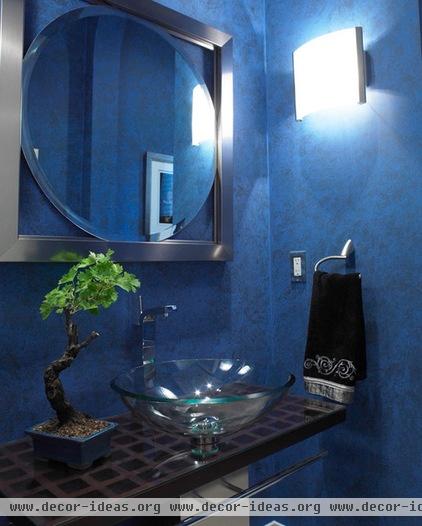
A grapevine bonsai is a dramatic addition to this intense blue bathroom, with pigmented deep blue walls, reminiscent of Moroccan style. You certainly can place your bonsai in a dark room for a limited time, though it should be raised primarily out of doors, in this case in a climate where grape vines would naturally thrive.
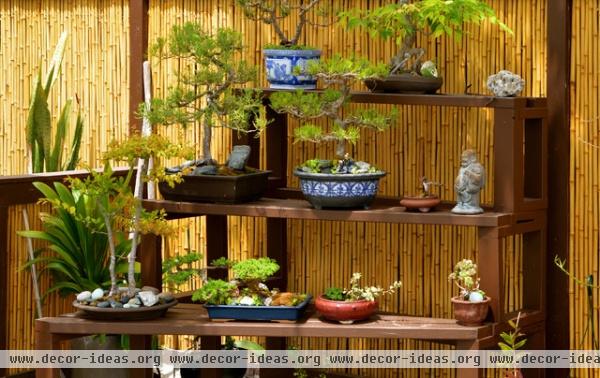
If you decide to grow bonsai, do set aside a space outdoors to display and grow your works of living art. Like any collection, they are especially pleasing to the eye when grouped together.
Bonsai can be planted in a variety of containers, though the low rectangular tray is traditionally used to create the appearance of growing out of the ground. Beautiful green moss or pebbles covering the soil add beauty to the composition and give these miniature trees an almost irresistible allure.
Bonsai Care
Temperature: This is species specific, and trees that require a cool dormancy period such as maples, larch, pines and junipers will not live indoors without this necessary period in their yearly cycle.
Light: Light requirements are species dependent, though most bonsai species need bright light.
Water: Species dependent, and can require dry, moist or wet soil. For subtropical or tropical species, allow the soil to become drier during their winter rest period, and begin watering normally when active growth resumes.
Soil: Loose, and fast draining, bonsai mix for the specific variety
Feeding: According to needs of specific bonsai tree, though most bonsai species will appreciate fertilizer
Repotting: Generally necessary to maintain a bonsai, and must occur at certain time intervals according to the growth pace and plant age. Many bonsais require re-potting once a year.
Tools: Special tools are available for specific bonsai maintenance, such as trimming and shaping
Bonsai Shopping Tips
With traditional conifer species, the trunk should be thicker at the bottom and taper toward the top. Avoid plants with scars; the trunk should be smooth.If the roots of the plant are visible, they should be securely anchored in the container with no protruding sections.Look for needles or foliage that are dense, glossy and bright with no shriveled or dried-out areas.Choose a bonsai that is growing in the center of the pot, unless the pot is large enough to account for an imbalance that could cause a small pot to fall over easily.More: See more examples of bonsai in the Products section
Related Articles Recommended












